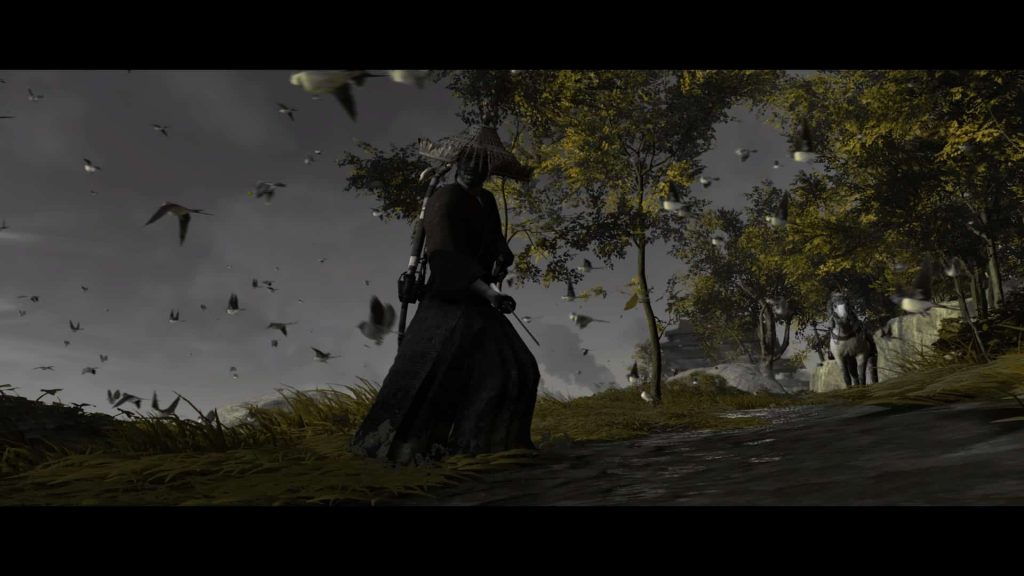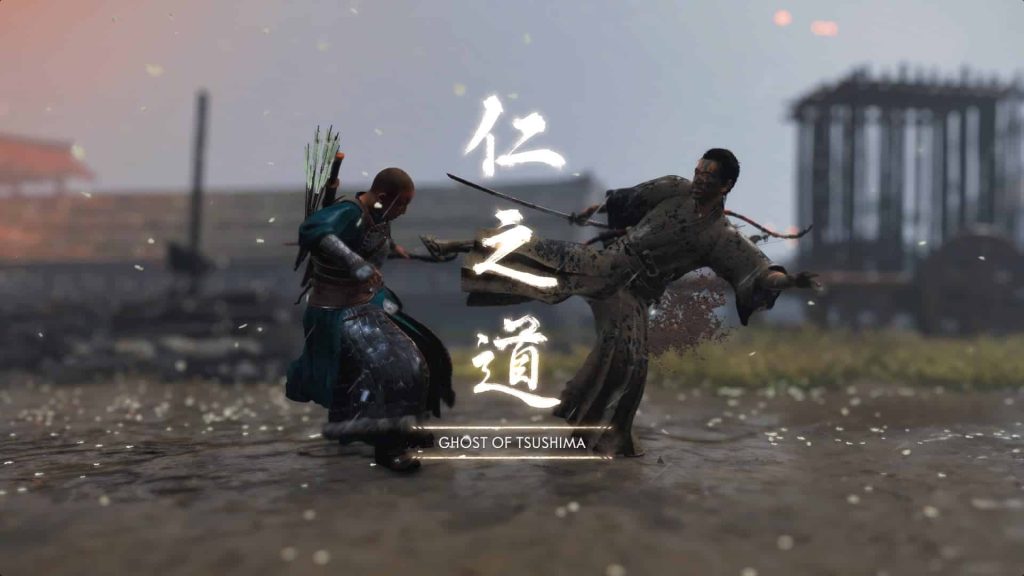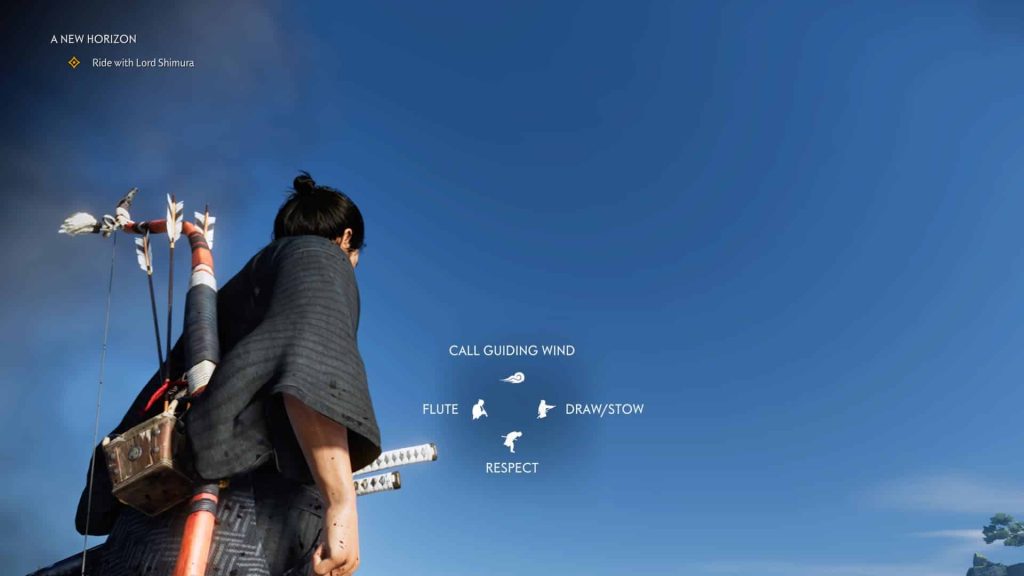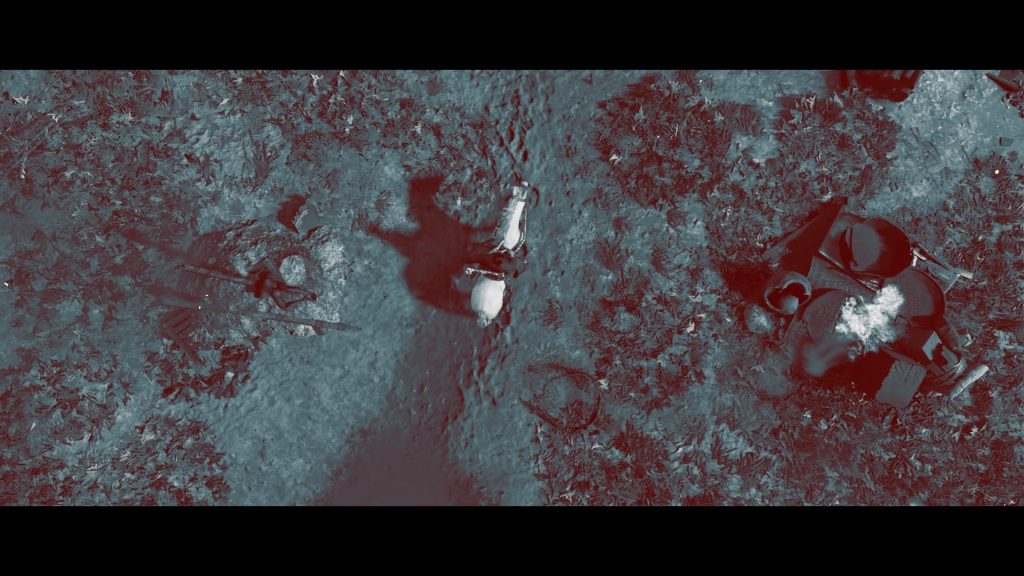Ghost of Tsushima, Sucker Punch’s Samurai Epic, is quite possibly the best PlayStation Exclusive of this generation, if not all time. Although a lot of it may seem familiar, as a whole, the game changes the discourse of what fans should expect from AAA action RPG titles for the better.
The PlayStation 4 has had some fantastic PlayStation Exclusive titles, I think we can all agree. However, Ghost of Tsushima might just be it’s best… Which is fitting, as it’s one of the last.
Ghost Of Tsushima Launch Trailer
The narrative and characters Ghost of Tsushima presents are unrivaled. Its’ gameplay is fluid and clean, with each kill as satisfying as the last. Sucker Punch have also packed it full of fantastic features which truly elevate it above it’s peers. I don’t want to be seen bashing recent Assassin’s Creed titles, as they are very good, but Ghost of Tsushima does what Origins and Odyssey seem to try to do… But better, to put it simply.
Ghost of Tsushima‘s Narrative is Unmissable
I won’t go into too much detail, as to prevent any major spoilers, but I will say this: Ghost of Tsushima‘s narrative is sublime in every aspect.
If you look at Ghost of Tsushima’s narrative at the most basic level, it is about the Japanese struggle against a Mongolian invasion. However, looking deeper into Jin Sakai’s experience throughout Ghost of Tsushima reveals that there is far more depth and nuance in its story-telling. Jin Sakai perfectly encapsulates the overarching theme of ‘survival at any cost’ alongside the contradictions the Samurai Code present when attempting to adhere to it in his current situation. He isn’t the only one, however…

Each character is compelling and, ultimately, reinforces this theme. In an effort to explain what I mean about the reinforcement of the over-arching theme, I want to talk a little bit about and Lady Masako.
Lady Masako is an ally of Jin Sakai that you meet through Act One of Ghost of Tsushima. When Jin Sakai finds her, she is burying her family as the last surviving member of Clan Adachi. Throughout her Tale, you aid her in dealing with the loss of Clan Adachi and her desire for revenge. Lady Masako’s story perfectly encapsulates Ghost of Tsushima‘s overall theme of ‘survival at any cost.’ Where Jin Sakai must go against his instinct as a Samurai in order to overcome the impossible odds he faces, Lady Masako too must struggle against her own desires for a dishonorable vengeance against those who killed her family. Where Jin Sakai’s fight for survival is more literally represented through fighting Mongols, Lady Masako’s fight for survival is against her own self-destructive desires. Throughout their Tale together, Jin Sakai acts as a grounded balance for Lady Masako, and it’s the perfect example of how well the characters play off one another.
It is hard to fully explain the complexities of every character in Ghost of Tsushima without writing an obscene amount. However, I will attempt to summarise…
Ghost of Tsushima‘s characters aren’t perfect, and there isn’t one appearance wasted. Ultimately, they are human, and each of their flaws is obvious. Each character you meet throughout your time playing as Jin Sakai is wonderfully crafted to provide an emotive and engaging experience.
Ghost of Tsushima’s Kurosawa Mode is Insane
Before continuing on, I thought it only right to mention how incredible Kurosawa Mode is in Ghost of Tsushima. I wouldn’t advise to completely play the game like this, as like any graphical overhaul it doesn’t make things as easy as they could be. However, for what it is, it’s incredible.
As a quick side-note, Kurosawa Mode is a graphical overhaul for Ghost of Tsushima that aims to emulate the visual style of Akira Kurosawa’s cinematic masterpieces. He is regarded as one of the most important and influential filmmakers in history, with much of his work serving as inspiration for Ghost of Tsushima.
Naughty Dog titles like Uncharted 4 and The Last of Us Part II are the only other games where I’ve really seen and interacted with graphical overhauls, so Kurosawa Mode was a new experience to me. What makes the way Sucker Punch has handled Kurosawa Mode different, though, is that it’s available from the start. In other titles, these graphical overhauls often become available after the first playthrough.
Ghost of Tsushima doesn’t necessarily want you to play in Kurosawa Mode, as you can toggle it on and off at a whim, but it is made with the cinematic sequences in mind. The opening of the game in Kurosawa mode is truly epic.
Sucker Punch Manage to Balance Beautifully Bright Vistas With Gruesome, Bloody Combat
Feudal Japan isn’t a location often featured in video games. When it is, it is often erring on the side of the mystic and finds itself dark and spooky. Ghost of Tsushima is completely the opposite while still retaining an air of mysticism throughout. The landscapes you find yourself in while playing Ghost of Tsushima are truly stunning. Even at night, Ghost of Tsushima never quite gets too dark. Instead, you fight in a twilight moonlight with splashes of colour from the light of fires.

Okay, that was overly poetic, but you get the point. You can always see what you’re doing clearly, and you can always appreciate the beauty of Ghost of Tsushima, day or night.
The beauty of your surroundings, however, is juxtaposed against gruesome and bloody combat which dances the line between reckless brutality and fine technique. Jin Sakai is a samurai, and he knows how to use his blade. Each strike you make is clean and decisive. With each killing blow, you are satisfied and eager to continue to fight back against the Mongol invaders. The blood splatter isn’t overdone, but it is always noticeable. This, to me, just emphasises the lethality you play with as Jin Sakai.
Each Instance of Conflict in Ghost of Tsushima is Punishing, Yet Addictive
But moving more onto the combat in Ghost of Tsushima: it’s hard to find any complaints. I am playing on Hard Mode, because of course I am. I was expecting it to be a bit of a challenge, and like any new game, its a bit of a learning curve, but Ghost of Tsushima is brutal.
A lot of the combat in Ghost of Tsushima relies on parry timing and dodging. As you advance, facing tougher opponents, you find that there are more and more instances of attacks that you can’t just block by holding R1. It’s easy to get caught up in the panic of being surrounded and forget this, though, so I find myself dying quite a lot. However, this is my own fault, and I didn’t really find myself getting that annoyed. I know, weird. Right?
When you couple the need for this technical skill with the four stances, each effective against a different type of opponent, Ghost of Tsushima‘s combat becomes wonderfully complex and engaging. It isn’t your simple hack and slash. It has more depth than its peers which more often than not just offer the option to counter-attack and dodge. As you play, you feel as if you really are learning something. You have to have the discipline and alertness of a samurai while making sure you know the right time to strike. There are health upgrades in Ghost of Tsushima, and you can use Resolve to heal, but Jin Sakai is far from unbeatable.
Dueling is a Big, Gorgeous, Part of Ghost of Tsushima
Each boss battle in Ghost of Tsushima comes in the form of a duel and these are arguably the most visually pleasing gameplay segments to watch. Much like an actual duel, a duel in Ghost of Tsushima is a test of your skill, focus, and ability. They may not be the toughest combat experiences, given that they’re one-on-one experiences, but they are as punishing as any other. One or two mistakes and you’ll find your way onto the pointy-end of a sharp stick.

When you enter a duel, it plays out a cinematic that is, perhaps, the most quintessentially samurai aspect of the game. It is similar to the Stand-Off, but you get drawn much more into the details of the two opposing warriors. There is a twitch of the fingers, a tilt of a head, the blade clicks effortlessly from it’s scabbard. Watching this in Kurosawa Mode really is just pure entertainment.
They also often appear at the climactic point of a particular narrative thread, meaning each one is engulfed in the contextual tension of the story it fits within. When they don’t, they come as a surprise and force you to instantly alter the way you play. You can still dodge and roll, but you don’t have any of your tools in a duel. It’s just you and your blade. You can still use Resolve to heal and change stances, but without opponents to fight, it’s often difficult to regain that Resolve.
Unlike boss battles in similar titles, the boss battles in Ghost of Tsushima are much more grounded and focused. Rather than continually dodging and rolling, you have to be cautious and strike when your opponent is staggered. Just because they are less frenzied doesn’t mean that they’re not as good. I would argue that they’re better.
Ghost of Tsushima‘s Guiding Wind is Wonderful
There are a whole host of brilliant features which set Ghost of Tsushima apart from its peers. You can initiate combat with an epic Stand-Off, play the flute to influence the weather, and fight using four different stances. However, amongst all of these, the one feature which stands out is the Guiding Wind.
The Guiding Wind is Sucker Punch’s answer to traditional waypoint mechanics. Rather than painting a route to the objective along pathways on the mini-map, Guiding Wind encourages a far-more natural traversal and exploration of the map. You still select a waypoint on the map, but Ghost of Tsushima doesn’t dictate which path you should take. Instead, it uses the wind to guide you in the direction of your waypoint. However, a bird also appears for you to follow to points of interest along the way. It’s a feature you might miss if you’re not paying attention, but it makes exploration a much-more rewarding aspect of the game. Not only that, but it is a fantastically aesthetic feature which pays compliment to the rest of the game perfectly.

In addition to this feature, there are two other features I want to highlight. Throughout Ghost of Tsushima, you can find Bamboo Strikes and Meditation spots. These both offer fun in-game ‘activities’ which reward you in improvements for Jin Sakai.
The Bamboo Strike emulates the reality of the challenge by testing your skill at sequential button combinations. You only have a second or two to input the correct sequence, but when you do you are rewarded with more Resolve.
In a similar way, when you reach a Meditation Spot you have the opportunity to compose a Haiku. These moments offer Jin Sakai, and you, the chance to reflect on the story so far. When forming a Haiku, you are offered two choices for each line, with Jin Sakai delivering each line as you choose them. It’s a strange moment of tranquility in an otherwise action-packed game that helps to balance the experience well.
Japanese Audio is the Only Way to Play
When I started Ghost of Tsushima, I began playing with Japanese Language Audio. I am so glad I did.
The Japanese Language Audio is fantastic. Sure, you have to read a lot more subtitles, and there are some lines that get a little lost during a fight, but you can live with that for the truly remarkable delivery of every line. After playing through Act One, I chose to play for a little while with the English Language Audio. This was more out of curiosity than anything, but it left me mildly disappointed in the voice acting.

Saying that… the English Language Audio is far from bad. It’s as well done as anyone would expect, although you feel like it wasn’t necessarily what was intended. It seems as if the character model’s speech is modeled for the English Language Audio at times, but the Japanese Language Audio seems much more natural and ultimately a stronger option. Not only this, but it is also an important step in normalizing Non-English Audio options in video games. This is the first game I have played in another language, but it makes me want to go back and play games like Assassin’s Creed: Unity in French.
Final Thoughts…?
Ghost of Tsushima might just be one of the best games I have ever played. In a similar way to when I got stuck in to God of War or Horizon: Zero Dawn, I found myself asking why I waited so long to get it. It truly ranks among the best PlayStation Exclusives of this generation, perhaps of all time.
[penci_review]
I honestly found it difficult to find anything wrong with this game. Sure, it might be a little difficult at times, but that’s more down to the fact that my timing is awful. The English Language Audio is by far the worst bit about it, but the fact that the Japanese Language Audio is so brilliant over-shadows this. I wasn’t playing in English Language Audio when writing this review, so it wouldn’t make sense to criticise it too heavily for it.
Fancy playing Ghost of Tsushima AND supporting Gamezo? You can pick up your copy of Ghost of Tsushima here via our affiliate link: Ghost Of Tsushima Amazon Listing
Like what you see? Don’t forget to share our work with the buttons below! Also, be sure to follow @GamezoGG on Twitter and check out our YouTube Channel for more great content from the Gamezo Team!

